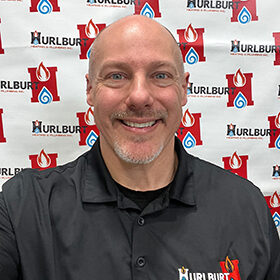When replacing a piece of air-conditioning equipment, it’s always good to consider the advantages of installing a completely new system instead of just swapping out one component. There are several important reasons for this.
When you replace an entire system at once, it will be comprised of components that have been designed to deliver the same level of efficiency. So all parts of the system can work together to save you energy and deliver the savings you’re expecting.
Pairing compatible equipment also means longer system life as well. When one part of the system is older, it creates a bottleneck that can make every other component work harder to compensate.
Source: http://www.ahrinet.org/App_Content/ahri/files/Homeowners/perfect%20match.pdf
Communicating about comfort and efficiency
Another reason to consider equipment from the same manufacturer has to do with the “communicating” capabilities built into a lot of modern equipment. Communicating systems connect furnaces, heat pumps, air conditioners, and air handlers in the same system together via special electronics. This allows each piece of equipment to optimize its performance based on what the other parts of the system are doing.
As an example, the iComfort WiFi communicating capabilities found in premium Lennox equipment let multi-stage and variable capacity furnaces and air conditioners fine-tune their output and energy use to deliver consistent savings, and even monitor themselves to ensure proper operation.
Unfortunately, there is no universal communication standard shared among manufacturers. So mixing and matching your equipment may provide you with heating and cooling, but without the communicating ability, your system won’t operate at its most effective or efficient level.
Building the right system for your climate
When it comes time to create your new system, the equipment you select will be determined largely by the climate where you live. Because while you can technically build a system any way you want it, you may end up spending more on things you don’t need.
Warmer climates: Consider a heat pump and air handler
In southern states where there are more warm days than cold, and the temperature rarely approaches freezing, the ideal system is most likely one that includes a heat pump and an air handler. That’s because even during cold weather, there is usually plenty of ambient heat in the air for a heat pump to draw into your house.
Heat Pump
A heat pump functions as both a heating and cooling unit. While a furnace would work just fine in this part of the country, a heat pump that uses electricity will most likely be the most energy-efficient solution even during cold snaps.
Air Handler
To circulate the air throughout your home every day of the year, an air handler makes a smart choice. Essentially a blower motor in a cabinet, an air handler can circulate warm air in the winter and cold air in the summer. While a furnace can do the same thing, the burners aren’t needed in warmer climates.
Colder climates: Consider an air conditioner and furnace
In northern climates, winter temperatures can drop below freezing fairly frequently. This doesn’t leave much ambient heat in the air, making a heat pump a less effective choice for warmth. A gas or oil furnace is a much smarter choice because it can convert fuel into warmth regardless of outside temperatures.
Moderate climates: Consider a dual-fuel system
In moderate climates, temperatures can be warm in the summer, cool in the fall, and cold in the winter. And while the temperatures may not drop quite as low as they do in cold climates, they can still get low enough to make a heat pump ineffective.
For these climates that can experience everything from moderate to severe temperatures, a dual-fuel system is the most energy-efficient solution to choose from. In a dual-fuel system, a heat pump and a furnace are paired together to work for maximum efficiency.
Different temperatures, different functions
During summer, the heat pump functions as an air conditioner to keep your home cool. When the weather starts to get cold, the heat pump will switch to heating mode to provide warmth. But if the temperature drops so low that the heat pump cannot get enough heat to keep your home comfortable, the system will automatically turn the heat pump off and switch to the gas furnace for heat.
When your Lennox® dealer installs your dual-fuel system, they will set the point at which the heat pump hands off to the furnace based on how much electricity and gas are in your area. So regardless of what the temperature does, you’ll always stay comfortable in the most energy-efficient way possible.
